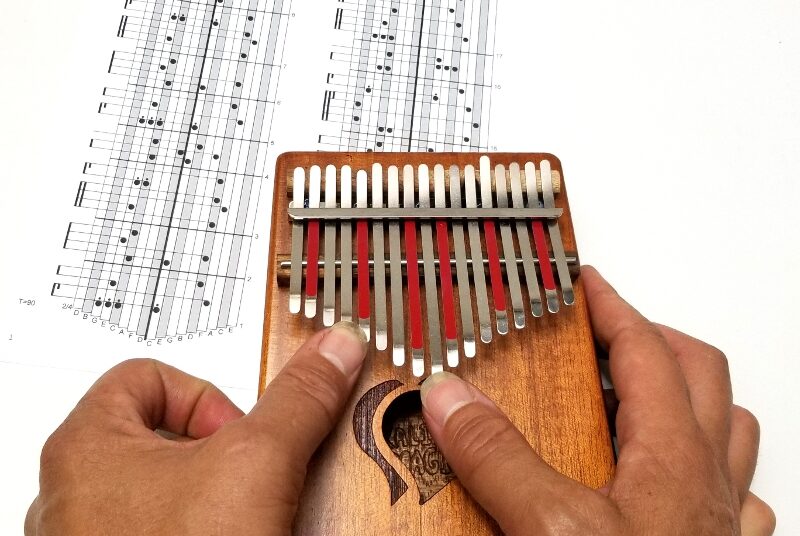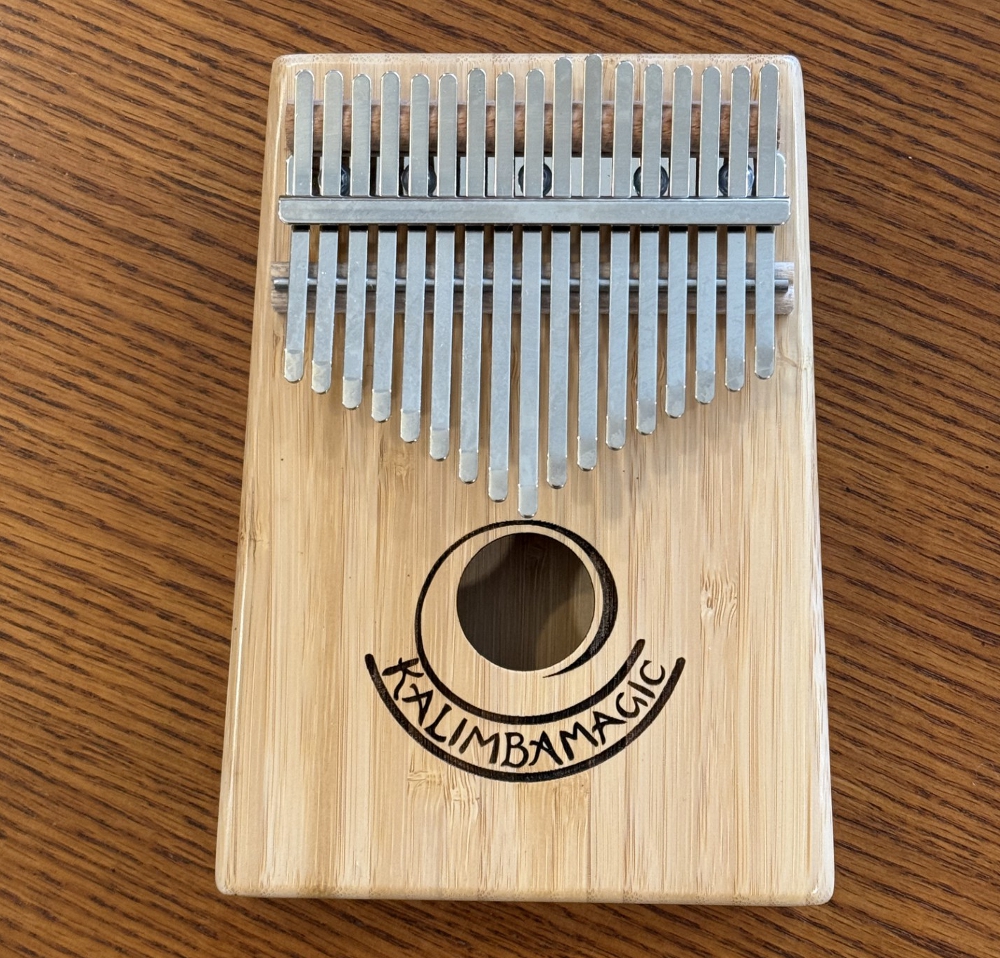
Use of this website constitutes acceptance of the Privacy Policy and User Agreement. Copyright © 2020 Kalimba Magic. All Rights Reserved.
One of the best ways to learn to play is by playing with someone else. If you don’t actually have someone else to who knows the song to play along with, another way is to play along with a recording of the song you are trying to learn.
Here we present something new in terms of Kalimba Magic instructional materials – the mbira song “Kuzanga” played progressively – meaning at first very slowly and speeding up gradually to help in learning to play. Also, the song is broken up into sections, which are later combined.
The way I learned this song initially was by listening to KTabS performing the segments at progressively faster speeds, and I thought I would share this with the world to see if it was useful to anyone else. By the way, the recording is in the key of E (Erica Azim’s preferred key for her mbiras – which have a low note of B – but this piece is in the key of E).
“Kuzanga” is a beautiful Shona mbira piece that has a typical mbira chord progression, but is in 9/8 rather than 12/8.
My recent “Work In Progress” performance of Kuzanga on Mbira
The typical mbira progression consists of four different phrases for each cycle. I’ll call the phrases A, B, C, and D. Furthermore, the basic part has four phrases, then each variation has four similar (but partly different) phrases. Usually the variations are made by substituting a few notes from the basic part or a simpler variation, by adding a few notes, or by removing a few notes. The basic character of the song remains the same across the different variations so you should not get lost in the variations. You should always know you are listening to “Kuzanga”.
A good way for me to learn these songs is to learn the four phrases for a given part separately, and then to combine them, at first pair-wise (each pair will cover the transition from the first of the two phrases to the next), and then finally as all four phrases combined. I start out slowly and speed up gradually. And it works best if I have KTabS (Kalimba Tablature Software) playing the music, supporting me, as I play along.
I recently recorded the different segments of “Kuzanga” plus the pairs, and I make them available here as an example of what can be done. If you work in KTabS, you can do this sort of thing yourself. If you don’t, this is the sort of work that I can do fairly easily for you.
Basic Part Kuzanga, A phrase, 70 bpm – 130 bpm
Basic Part Kuzanga, B phrase, 70 bpm – 130 bpm
Basic Part Kuzanga, C phrase, 70 bpm – 130 bpm
Basic Part Kuzanga, D phrase, 70 bpm – 130 bpm
Basic Part Kuzanga, A + B phrases, 70 bpm – 130 bpm
Basic Part Kuzanga, B + C phrase, 70 bpm – 130 bpm
Basic Part Kuzanga, C + D phrase, 70 bpm – 130 bpm
Basic Part Kuzanga, D + A phrase, 70 bpm – 130 bpm
Basic Part Kuzanga, all four phrases, 80 bpm
Kuzanga, Basic Part 70 – 130 bpm
Basic Part plus several other variations, Kuzanga, all four phrases, 130 bpm
Variation 1 Kuzanga, all four phrases, 70 – 130 bpm
I learned which notes to play from B. Michael Williams’ book Learning Mbira: A Beginning. I transferred those notes into KTabS, and then learned from playing along with KTabS. The sound recordings here are made by recording KTabS as it played, through my computer’s speakers, each of the different parts with their accelerating tempo profiles.
Again, the important thing: you have access to the means to create your own KTabS files like this to learn a piece. I may do this sort of thing to learn another song; and if there is enough interest, I could repeat it for other music. Of particular note: I can transpose these song segments into any key for you, if you have an mbira or karimba in a different key.


Sign up for our newsletter and free resources with your email address:
We pinky promise not to spam you and to only send good stuff.
 Seek to Infuse Your Musical Moments With Beauty and Magic
Seek to Infuse Your Musical Moments With Beauty and Magic Kalimba Magic – We Give You The Tools You Need to Succeed
Kalimba Magic – We Give You The Tools You Need to Succeed Back in Stock! The Bamboo-17 Kalimba
Back in Stock! The Bamboo-17 KalimbaUse of this website constitutes acceptance of the Privacy Policy and User Agreement. Copyright © 2020 Kalimba Magic. All Rights Reserved.